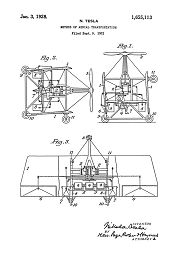Nikola Tesla's Fluid Dynamics
Turbine, Valvular Conduit, Pump, Fountain, Velocity Meters, Aerial Transportation
1,061,206
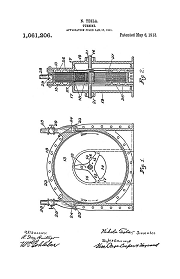
1,329,559

Valvular Conduit - Feb 21, 1916
The system that Tesla designed and actually operated here is simply amazing. The biggest problem with the Tesla Turbine is that the materials science required for the turbine discs is identical to the problems found in jet engine turbine blades, or possibly worse. Either the discs have to be machined from a single crystal of alloy, or you have to use ceramics. The combustion chamber of the Tesla Turbine is designed as a rocket engine combustion chamber, and the intake manifold to the turbine discs is a rocket nozzle. This rocket motor is powered with pulses of fuel and air/oxidizer delivered through one-way valvular conduits and has no moving parts. This is much more advanced technology than the Germans developed with the V-1 pulse jet, because the Tesla Turbine uses a pulse rocket to drive the turbine disks.
From all appearances, the Turbine, the Pump, the Meters even, are descended from electromagnetic studies on 405,858 and 406,968 which are covered in the section on Tesla Transmitters.
1,061,142
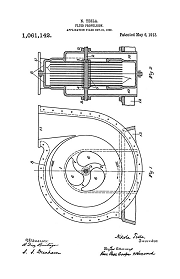
Fluid Propulsion - Oct 21, 1909
1,113,716
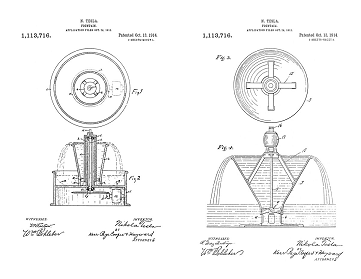
1,119,732
1,209,359
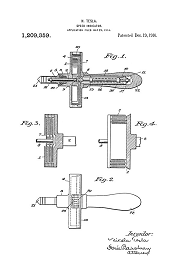
Speed-Indicator - May 29, 1914
1,274,816
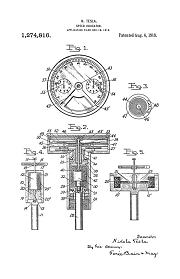
Speed-Indicator - Dec 18, 1916
1,314,718
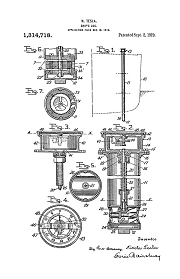
1,365,547
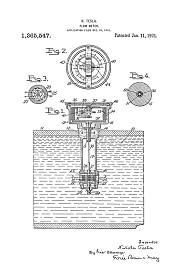
1,402,025

Frequency Meter - Dec 18, 1916
1,655,113
Method of Aerial Transportation - Sept 9, 1921
1,655,114
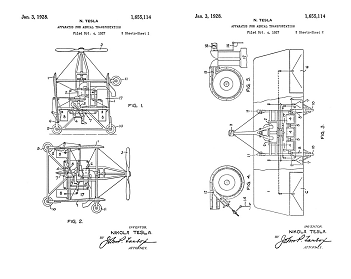
Apparatus for Aerial Transportation - Oct 4, 1927
Related Patents
11,865
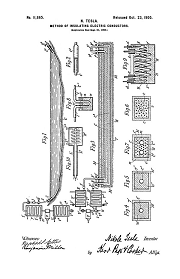
Method of Insulating Electrical Conductors - Sept 21, 1900
685,012
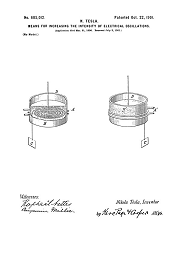
Means for Increasing the Intensity of Electrical Oscillations - Mar 21, 1900
Tesla Fluid Model

Unified Field Mathematics
Tesla Transmitters

Wireless Transmission of Electrical Energy
To the Archive Page Discussion on Tesla's Technology


